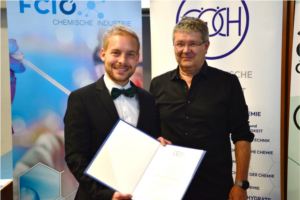FUNCTIONAL CERAMICS: LIGHT BETWEEN THE GRAINS
It is no longer possible to imagine life without ceramic materials. They are just as prevalent and dominant as metals, polymers or composites.
Typically, ceramics are obtained by compacting the powders of starting materials followed by a temperature treatment in so-called sintering furnaces.
This densification treatment makes them strong and leads to properties that make them well-suited candidates, for example, for luminescent and lighting materials. In addition, they are used for the conversion and storage of energy or as electro-chemical sensors (which can be imagined as technical sensory organs for smelling and tasting).
Gaps in material structures
In all these applications, the chemistry and structure between the grains and at the so-called grain boundaries play a decisive role.
Dr. Thomas Schwab and Hasan Razouq, M.Sc. from the Department of Chemistry and Physics of Materials at the Paris Lodron University Salzburg (PLUS) have asked themselves the following question:
What chemical changes must occur inside ceramics during heat treatment before they can be used as functional materials?
As part of their research, the two young scientists have succeeded in establishing essential structure-property relationships between the grains in the powder and the compacted functional ceramics.
To do this, they added barium oxide in minute quantities to the grains (made of magnesium oxide) in the starting material. The barium oxide subsequently served as a probe to investigate the luminous properties of the ceramics. It also helped to explain the chemistry that takes place in the grain boundaries.
A lot has been learned about the formation and function of intergranular region in functional ceramics. It was also possible to draw valuable conclusions about how particle powders need to be formulated in terms of their processability.
New findings on functional ceramics
An article by the two authors on these new and essential insights has now been published in the February 2023 issue – as well as appearing on the cover – of the renowned Journal of the American Ceramic Society.
Thomas Schwab was also able to celebrate another great success: In September last year, he received the Dissertation Award, awarded by the Austrian Chemical Industry Association and the Austrian Chemical Society.
The “light between the grains” will continue to guide the two young researchers from the Department of Chemistry and Physics of Materials. There is still a lot to learn about gaps and interfaces in material structures, says Thomas Schwab, and – as his prize shows – every now and then they can reap the rewards.
Contacts
- Dr. Thomas Schwab
- Hasan Razouq, M.Sc.

Interested in more PLUS DOSSIERS? Read all series and articles here.





